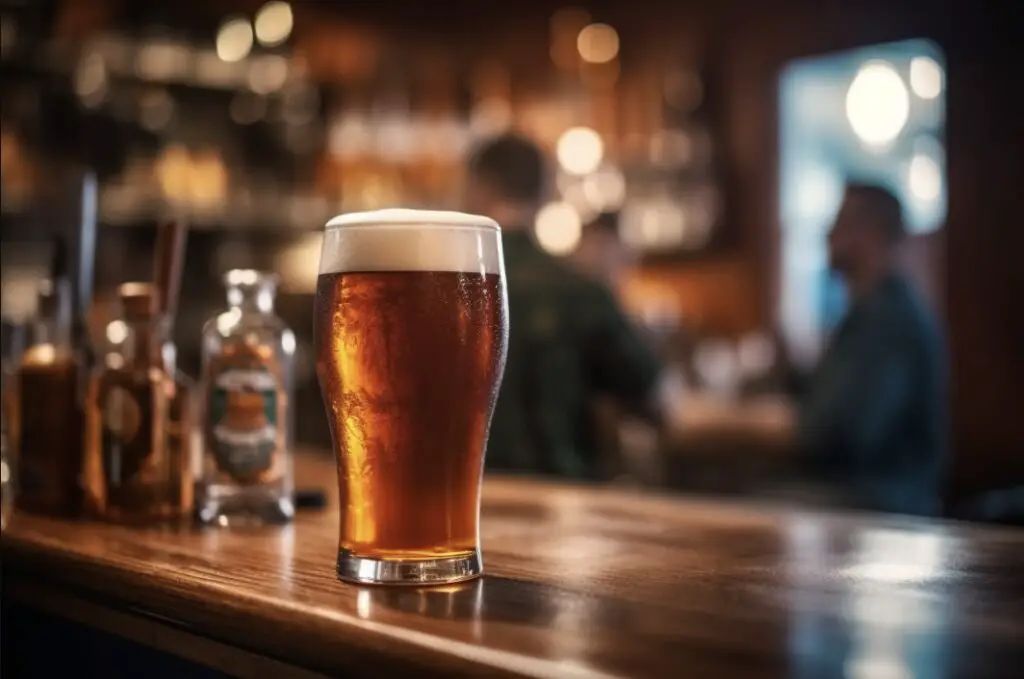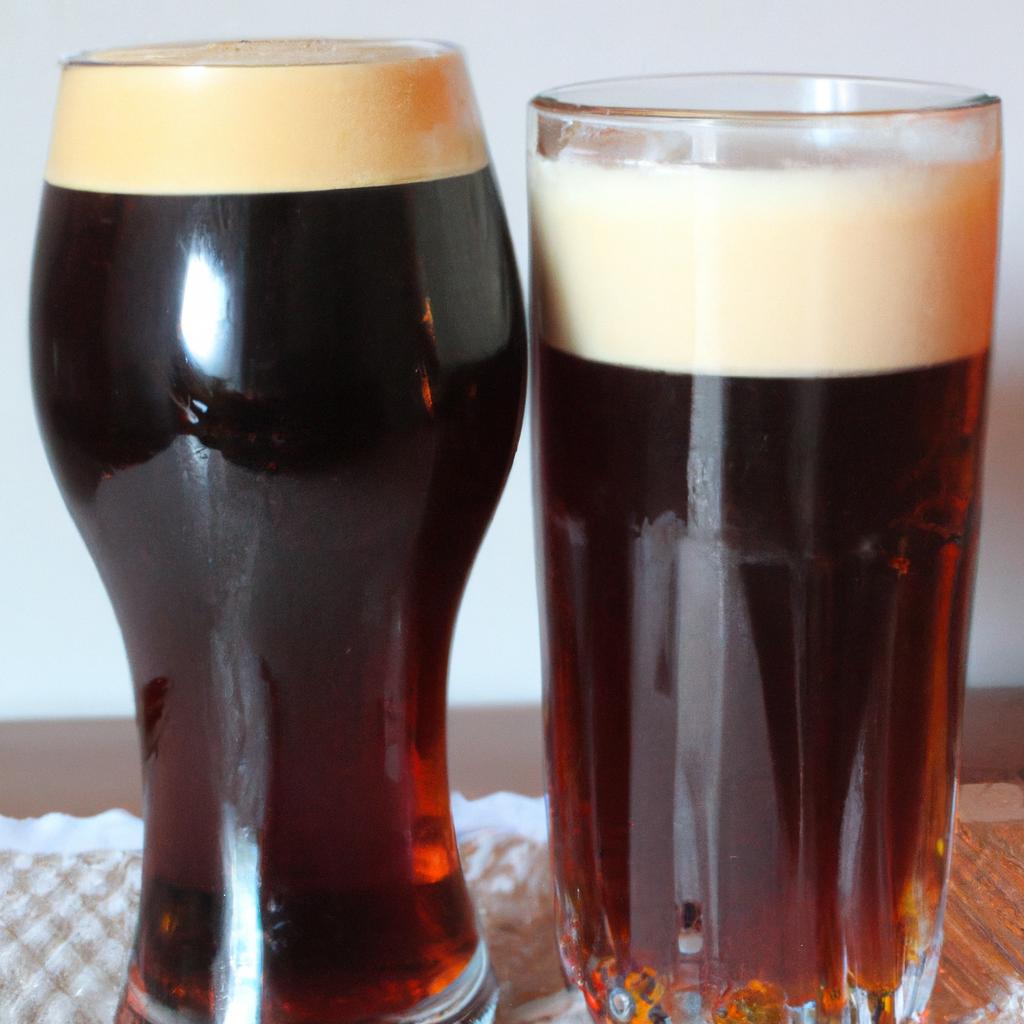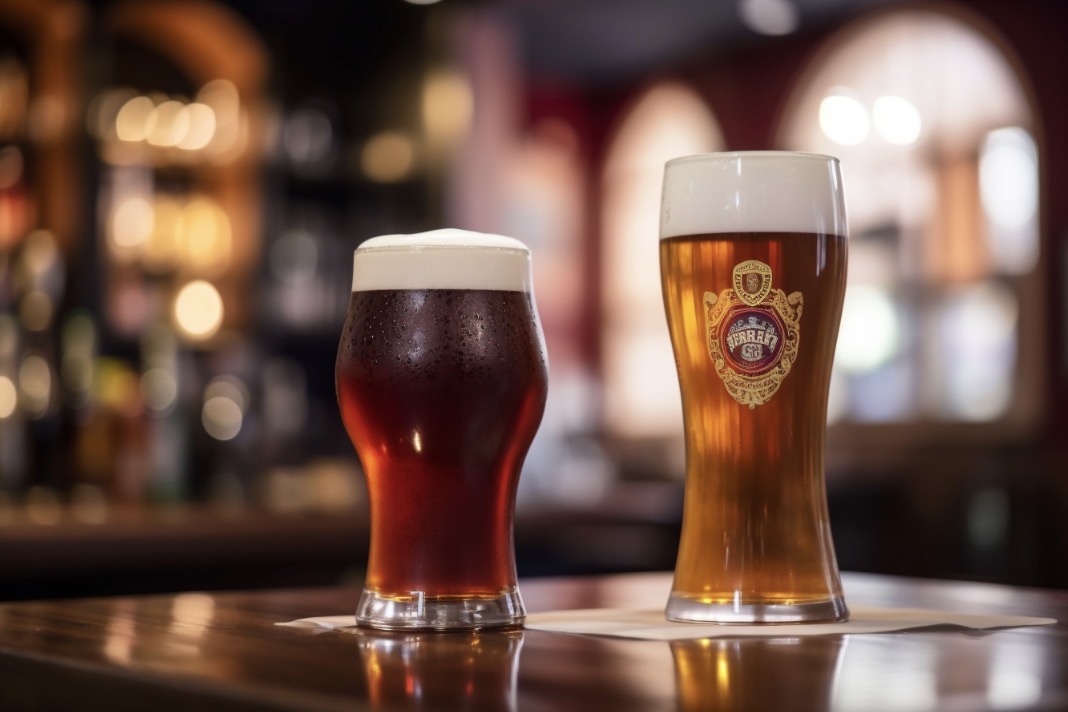When it comes to the world of beer, there is an almost endless array of styles and variations to choose from. Two such styles that often spark curiosity and conversation among beer enthusiasts are bock beer and brown ale. While both are dark and malty, they are distinct in their flavors, history, and brewing techniques.
The main difference between bock beer and brown ale is that bock is a strong, dark, and malty lager originating from Germany, while brown ale is a milder, slightly sweet, and nutty ale hailing from England.
In this blog post, we will delve into the differences between these two styles, explore their origins, and discuss the brewing process for each.
Bock Beer: A Brief History
Bock beer has its roots in Germany, specifically the town of Einbeck in Lower Saxony. The beer was first brewed in the 14th century and gained popularity among German nobility. The name “bock” is thought to have come from a corruption of the town’s name, with locals pronouncing it as “ein bock,” which means “a billy goat” in German. This likely explains why many bock beer labels today feature a goat as part of their imagery.

Traditional Bock Beer Styles
There are several sub-styles of bock beer, each with its own unique characteristics. These include:
1.Traditional Bock: A rich, malty lager with a deep amber to dark brown color. It usually has an ABV (alcohol by volume) of 6-7.5% and a subtle hop bitterness that balances the malt sweetness.
2.Maibock or Helles Bock: A paler, more hop-forward version of the traditional bock. It is typically brewed in the spring and has a lighter color and a slightly higher ABV (6.5-8%).
3.Doppelbock: A stronger, more full-bodied version of the traditional bock beer. It often has a dark brown color and an ABV ranging from 7-12%. Doppelbock is known for its rich, malty flavor and warming alcohol presence.
4.Eisbock: An even stronger variation of the doppelbock, created by partially freezing the beer and removing the ice, which concentrates the flavor and alcohol content. Eisbock typically has an ABV of 9-15% and a rich, syrupy mouthfeel.
Brown Ale: A Brief History

Brown ale, on the other hand, has its origins in England, where it has been brewed since the 17th century. Early versions of the style were often referred to as “mild” due to their lower alcohol content and milder flavor compared to the stronger, hoppier pale ales of the time. Brown ale fell out of favor in the 20th century but has since experienced a resurgence, particularly in the United States, where craft brewers have embraced and adapted the style.
Traditional Brown Ale Styles
There are two primary styles of brown ale, each with its own regional variations:
1.English Brown Ale: This style is characterized by a nutty, slightly sweet malt profile and a moderate alcohol content (ranging from 4-6% ABV). Within the English brown ale category, there are further regional variations:
-Southern English Brown Ale: Typically sweeter and darker, with a fuller body and a lower hop presence.
-Northern English Brown Ale: Often drier and lighter in color, with a slightly higher hop bitterness to balance the malt sweetness.
2.American Brown Ale: A more modern adaptation of the English brown ale, the American version is typically hoppier and may have a higher alcohol content (around 4.5-6.5% ABV).
The malt profile remains nutty and slightly sweet, but the hop presence is more pronounced, often featuring American hop varieties that contribute citrus or piney notes.
Bock vs. Brown Ale: ABV and Strength
One of the most significant differences between bock and brown ale is their alcohol content and overall strength. Bocks are traditionally stronger beers, with an alcohol by volume (ABV) ranging from 6% to 7.5% or even higher for certain variants. This higher ABV contributes to the beer’s rich, warming character, which is perfect for sipping on cold winter nights.
In contrast, brown ales typically have a lower ABV, usually falling between 4% and 6%. This makes them more sessionable, allowing for easier consumption over a longer period.
Bock vs. Brown Ale: Flavor Profiles
While both bock and brown ale are malt-forward beers with rich, toasty flavors, the specific flavor profiles can differ significantly. Bocks are characterized by their strong malt presence, with flavors of toasted bread, caramel, and toffee. There may also be subtle fruity notes, such as raisins, plums, or figs. The hop character in bocks is usually subdued, providing just enough bitterness to balance the rich maltiness.
Brown ales, on the other hand, have a more balanced flavor profile, with the malt and hops playing equal roles. While the malt flavors may be similar to those in a bock, they are typically less intense. English brown ales, in particular, are often characterized by a nutty, caramel sweetness, while American brown ales may have more of a hoppy, citrusy edge.
Bock vs. Brown Ale: Ingredients
The ingredients used in brewing bock and brown ale are also somewhat different. Bock beers are generally brewed using a base of Munich or Vienna malt, which contributes to their rich, malty character. Specialty malts, such as caramel and chocolate malts, may also be used to add depth and complexity to the beer’s flavor.
Brown ales, on the other hand, typically use a base of pale malt, along with a variety of specialty malts to achieve their signature color and flavor. Crystal, chocolate, and caramel malts are common choices for brewing brown ales, and some recipes may also incorporate roasted barley or other grains for added complexity.
Bock vs. Brown Ale: Brewing Techniques
The brewing techniques for bock and brown ale differ primarily due to their respective classifications as lagers and ales. Bocks are lagers, meaning they are fermented at cooler temperatures (usually around 45-55°F) and require a longer, slower fermentation period. This extended fermentation time allows for the development of the beer’s rich, malty flavors and smooth, clean finish.
Brown ales, as ales, are fermented at warmer temperatures (typically around 60-75°F) and generally have a shorter fermentation time. This faster fermentation process results in a beer with more fruity, estery flavors and a slightly more assertive hop character.
Bock vs. Brown Ale: Variations
Both bock and brown ale have several variations that showcase the diversity and adaptability of their respective styles. Bock beer has several substyles, including Maibock (a paler, more hop-forward version), Doppelbock (a stronger, more malt-focused beer), and Eisbock (an even stronger and more concentrated version created by freezing and removing some of the water content).
Brown ale also has its variations, with English and American brown ales representing the two main substyles. English brown ales are typically sweeter and more malt-focused, while American brown ales are more hop-forward and robust. Additionally, there are many experimental and creative takes on brown ales, incorporating ingredients such as coffee, chocolate, or various fruits.
Bock vs. Brown Ale: Food Pairings
Both bock and brown ale are versatile when it comes to food pairings, as their rich flavors complement a wide variety of dishes. Bock beers are particularly well-suited to hearty fare, such as roasted meats, sausages, and stews. The beer’s robust maltiness and alcohol content can stand up to the rich flavors and textures of these dishes, while its subtle hop bitterness can help to cut through the fat and cleanse the palate.
Brown ales are similarly adaptable, pairing well with a range of dishes from roasted meats and vegetables to cheese and charcuterie boards. The beer’s balanced flavor profile and moderate strength make it a perfect partner for a diverse array of flavors and textures.
Brewing Techniques and Ingredients
While both bock beer and brown ale are dark and malt-forward, the brewing techniques and ingredients used for each style are quite different. This is primarily due to the fact that bock is a lager, while brown ale is an ale.
Bock Beer Brewing
Bock beers are brewed using a lager yeast strain, which ferments at colder temperatures (around 48-55°F or 9-13°C) and requires a longer fermentation and conditioning period. This contributes to the clean, smooth flavor profile that is characteristic of lagers. The malt bill for bock beers typically includes Munich or Vienna malt, which lends a rich, toasty, and slightly sweet flavor to the beer. Darker versions of bock may also use specialty malts like caramel or chocolate malt to add color and complexity. Noble hop varieties are often used for bittering, but the focus remains on the malt flavors.
Brown Ale Brewing
Brown ales, being ales, are brewed using an ale yeast strain, which ferments at warmer temperatures (around 60-72°F or 15-22°C) and has a shorter fermentation time. The malt bill for brown ales usually includes a base malt like pale or Maris Otter, along with a variety of specialty malts that contribute caramel, chocolate, and toasted flavors. The hops used in brown ales can vary depending on the regional style, with English brown ales typically using earthy, floral English hop varieties, and American brown ales incorporating more assertive, citrusy American hops.
Flavor Profiles and Pairing Suggestions
The flavor profiles of bock beer and brown ale are quite distinct, making each style well-suited to different food pairings and occasions.
Bock Beer Flavor and Pairings
Bock beers are known for their rich, malty sweetness, often accompanied by notes of caramel, toffee, and dark fruit. The stronger versions, like doppelbock and eisbock, may also have a touch of warming alcohol heat. When it comes to food pairings, bock beers work well with hearty, flavorful dishes like roasted meats, game, and rich, creamy cheeses.
Brown Ale Flavor and Pairings
Brown ales, on the other hand, offer a more subtle malt profile, with flavors of toasted bread, nuts, and a hint of caramel sweetness. The hop bitterness in brown ales is usually low, creating a balanced and easy-drinking beer. Brown ales pair well with a variety of foods, including roasted or grilled meats, earthy vegetables like mushrooms, and nutty cheeses like Gouda or aged cheddar.
Personal Experience
As a brewer, I have had the pleasure of brewing and enjoying both bock beers and brown ales. I have found that brewing bock beers requires more patience, due to the longer fermentation and conditioning times, but the end result is a rich, satisfying beer that is perfect for sipping on a cold winter’s night. Brown ales, in contrast, are quicker to brew and offer a more approachable, easy-drinking experience that can be enjoyed year-round. I particularly enjoy experimenting with different malt and hop combinations in my brown ale recipes, allowing for endless variations on this classic style.
Conclusion
In conclusion, the main difference between bock beer and brown ale lies in their origins, brewing techniques, and flavor profiles.
Bock and brown ale are both malt-forward beers with rich flavors, but bock is a stronger, more robust lager, while brown ale is a milder, more sessionable ale.
Bock is a strong, dark, and malty lager hailing from Germany, while brown ale is a milder, slightly sweet, and nutty ale born in England. Here are ten key facts about these two distinct beer styles:
- 1. Bock beer originates from Germany, while brown ale has its roots in England.
- 2. Bock beer is a lager, and brown ale is an ale.
- 3. Bock has a higher ABV (6-7.5%) than brown ale (4-6%).
- 4. Bock beer is known for its rich, malty sweetness, while brown ale offers a more subtle malt profile with flavors of toasted bread and nuts.
- 5. There are several sub-styles of bock beer, including traditional bock, maibock, doppelbock, and eisbock.
- 6. Brown ale has two primary styles: English brown ale and American brown ale, each with its own regional variations.
- 7. Bock beer is brewed with lager yeast and requires a longer fermentation and conditioning period, while brown ale is brewed with ale yeast and has a shorter fermentation time.
- 8. Bock beer typically uses Munich or Vienna malt and noble hop varieties, while brown ale uses a base malt like pale or Maris Otter and a variety of specialty malts and hops.
- 9. Bock beer pairs well with hearty, flavorful dishes like roasted meats and rich cheeses, while brown ale is more versatile, pairing well with a range of dishes from roasted meats to earthy vegetables.
- 10. Both bock beer and brown ale offer unique and enjoyable drinking experiences, making them well worth exploring for beer enthusiasts and casual drinkers alike.
FAQs
Is a bock a brown ale?
No, a bock is not a brown ale. Bock is a type of lager beer that originated in Germany, while brown ale is a type of ale that originated in England.
What is different about bock beer?
Bock beer is a type of lager that is brewed with a higher amount of malt, which gives it a richer, sweeter flavor and a higher alcohol content than other lagers. It is typically brewed in the fall and aged through the winter months, resulting in a smooth and full-bodied beer with a slightly roasted taste.
What is the difference between bock beer and brown ale?
Bock beer is a lager that is traditionally brewed in Germany, while brown ale is an ale that originated in England. Bock beer tends to be stronger and maltier than brown ale, which has a nutty and slightly sweet flavor.
What kind of beer is bock?
Bock is a strong, dark lager beer that originated in Germany. It is typically brewed with a higher alcohol content and a rich, malty flavor profile.
Is bock beer a lager or ale?
Bock beer is a lager.
What is considered a brown ale?
A brown ale is a beer style that is typically dark brown in color and has a malty flavor with low to moderate hop bitterness. It is brewed using a variety of malts, including caramel, chocolate, and roasted malts, which give it its characteristic color and flavor profile. Brown ales can range from light and refreshing to full-bodied and complex, and may have notes of nuts, toffee, or coffee.
Is Guinness a brown ale?
No, Guinness is not a brown ale. It is a stout.
What brands are brown ale?
Some popular brands of brown ale include Newcastle Brown Ale, Samuel Smith’s Nut Brown Ale, and Sierra Nevada Tumbler Autumn Brown Ale.
Is Shiner bock a Brown Ale?
No, Shiner Bock is a type of lager beer, not a brown ale.
Is a bock a Brown Ale?
No, a bock is not a Brown Ale. Bock is a type of lager that originated in Germany, while Brown Ale is a type of ale that originated in England.




